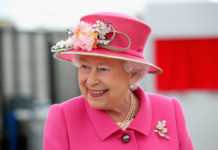ABC News reports that there are signs the COVID-19 curve in Greater Sydney is flattening after nearly 12 weeks of lockdown, according to leading epidemiologists and an analysis of NSW Health infection data.
NSW Health modelling projected infections would peak this week, but chair of epidemiology at Deakin University Catherine Bennett said transmission of the virus was already slowing.
She said for much of the Delta outbreak, which has resulted in almost 39,000 cases and 184 deaths since June 16, the reproduction rate of the virus has been 1.3.
This critical number is how many people on average an infected person will pass the virus on to.
“Sydney’s looking quite good, for two weeks we’ve seen this consistent downward push on the reproductive number. In fact, for the last week it’s been sitting steady at 1, and that’s what you need to see for that flattening of the curve,” Professor Bennett said.
Fellow epidemiologist Adrian Esterman from the University of South Australia was also confident the curve was flattening, but told ABC Radio National this does not mean case numbers have peaked.
“I’m seeing the rate in growth of cases slowing right down. So it has all the sign of a peak, but the numbers are not there to tell me it is a peak and it won’t be for a few days yet, but I am very optimistic,” Professor Esterman said.
After a week with record case numbers — with the peak being just shy of 1,600 — the weekend infection figures were down to about 1,200 per day, the same as seven days earlier.
Testing rates are generally lower on Sundays, which can influence a drop, and swabs across NSW have dipped in the past six days to 130,000 compared to 140,000 the week before.
But an examination of the data showed a glimmer of hope within the rolling seven-day average.
Although week-by-week infection figures have plateaued before, the seven-day average has fallen to 1,395, down from 1,430 on Friday.
For the first time since the outbreak began in mid-June, the state has seen a downward trend of cases.
This drop in the infection average, however, could be short-lived.
NSW Health’s own pandemic modelling predicted cases would peak this week, while hospitalisations would not reach their highest level until mid-October.
This assessment was based on skyrocketing vaccine numbers in Sydney’s 12 local government areas (LGAs) of concern finally driving case numbers down.
Since the end of August, when this modelling was developed, there have been developments that have health authorities “especially worried”.
The state government on Monday repeated its concerns about Sydney’s inner-city suburbs, including Glebe, Waterloo and Redfern.
A breakdown of infections by postcode reveals an alarming surge of cases in the area.
Since September 1, Redfern has recorded 109 cases, with 79 in the last six days.
Similarly the postcode for Waterloo and Zetland has had 125 cases this month, with 77 infections detected in that same six-day period.
In the inner-city of Sydney, 40 per cent of the population are fully vaccinated, compared with up to 55 per cent in some parts of the eastern suburbs.
The discrepancy between those vaccination rates can be partially explained by about a third of Redfern, Waterloo and Zetland residents being aged between 25 to 34 years old, meaning they had less access to the jab.
Over in the densely populated Inner West LGA, the government has also erected pop-up vaccination and testing clinics.
The Premier said she was “especially worried” about vulnerable communities in the area but has not received health advice to subject the LGA to enhanced stay-at-home orders like those seen in Blacktown and Fairfield.
NSW Health’s Jeremy McAnulty also sounded the alarm yesterday over “high-risk settings” that have seen cases escalate inside prisons, aged care facilities and hospitals.
Despite the worrying signs, Professor Bennett urged discipline with both vaccination rates and restrictions to ensure overall gains were not lost.
“As those vaccination rates continue to rise and the people vaccinated last week start to get a great level of protection by next week, you’ll start to see that reproductive number down below one and that’s what brings your case number down,” Professor Bennett said.
“It’s really important we don’t lose this advantage we have at the moment, which is seeing that reproduction number come down firmly to one.
“That’s taken a lot to get there, you don’t want to lose that.”
Report Courtesy: abc.net.au











